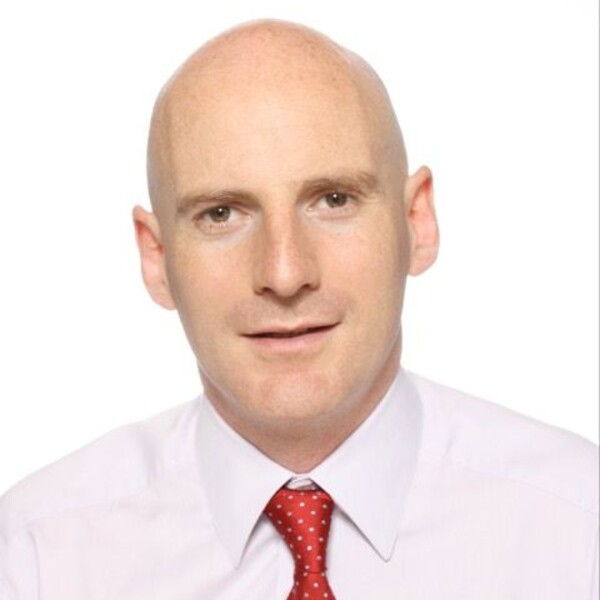Breadcrumbs
Dr. Gerard Curley

Lab Members
- Dr. Gerard Curley, PhD: Principal Investigator
- Dr. Allen Volchuk, PhD: Research Associate
- Dr. Mirjana Jerkic, MD, PhD: Research Associate
- Dr. Claire Masterson: Post-doctoral Fellow
- Stéphane Gagnon: Research Technician
- Grace Hogan: Masters Student
- Dr. Kate Tatham: Critical Care Fellow
- Dr. Razieh Rabani: Post-doctoral Fellow
Lab Description
The lab is located in the brand new, state-of-the-art Keenan Research Centre for Biomedical Science of St. Michael's Hospital, Toronto. Research Core Facilities includes both common and specialized facilities, such as Flow Cytometry, Molecular Biology, Histology and Bioimaging. The Research Bioimaging Facility has a variety of specialized equipment for image capture, analysis and display that we use regularly including confocal microscopes providing thin optical sections of single cells and an advanced live cell imaging system. In addition, a state-of-the-art vivarium is available. Dr. Curley's lab has expertise in live cell imaging, intravital microscopy of intact lung, flow cytomtery and has established reliable pre-clinical models of ARDS and sepsis for translational research.
Research Focus
Two areas are under study in Dr. Curley's laboratory. The first investigates optimization of mesenchymal stem cell (MSC) therapy for Acute Respiratory Distress Syndrome and sepsis. They use in vitro functional assays (epithelial and endothelial wound repair, monocyte inflammation and polarization status) and conventional animal models (rodent and murine Ventilator Induced Lung Injury, LPS, E. coli pneumonia, caecal ligation and puncture) to test heterogeneous MSC populations (early and late passage, from bone marrow and umbilical cord, pre-activated with cytokines and TLR ligands).
The second investigates the mechanism of action of MSCs during inflammation and repair. Researchers are examining the fate of MSCs in the pulmonary vasculature using a microfluidics device in vitro and intra-vital sub-pleural imaging in live mice. They are also focused on the interaction of MSCs with monocytes and macrophages, and in particular on macrophage phenotype, phagocytosis and bacterial killing as a key therapeutic effect of MSCs in sepsis. They have identified a novel MSC-induced macrophage phenotype with enhanced microbicidal capability, including NADPH-oxidase 2 (NOX2) mediated reactive oxygen species production during phagocytosis. Other work aims to identify the molecular mechanisms underpinning receptor-mediated phagocytosis in MSC-educated macrophages.
Selected Publications
- Hayes M, Curley GF, Contreras M, Higgins BD, Laffey JG. Mesenchymal stromal cells are more effective than the MSC secretome in diminishing injury and enhancing recovery following ventilator-induced lung injury. Intensive Care Medicine Experimental. 2015 Dec;3(1):29.
- McAuley DF, Curley GF, Hamid UI, Laffey JG, Abbott J, McKenna DH, Fang X, Matthay MA, Lee JW. Clinical grade allogeneic human mesenchymal stem cells restore alveolar fluid clearance in human lungs rejected for transplantation. Am J Physiol Lung Cell Mol Physiol. 2014 May 1;306(9):L809-15.
- Curley GF, Ansari B, Hayes M, Devaney J, O’Toole D, O’Brien T, Laffey JG. Effects of intra-tracheal Mesenchymal Stem Cells therapy during recovery and resolution following Ventilator Induced Lung Injury. Anesthesiology. 2013 Apr;118(4):924-932.
- Curley GF, Hayes M, Ansari B, Shaw G, Ryan A, Barry F, O’Brien T, O’Toole D, Laffey JG. Mesenchymal stem cells enhance recovery and repair following ventilator-induced lung injury in the rat. Thorax. 2012 Jun;67(6):496-501.
- Curley GF, Contreras M, O’Toole B, Higgins B, O’Kane C, McAuley D, Laffey JG. Evolution of the inflammatory and fibroproliferative responses during resolution and repair following Ventilator Induced Lung Injury. Anesthesiology. 2011 Nov;115(5):1022-32.